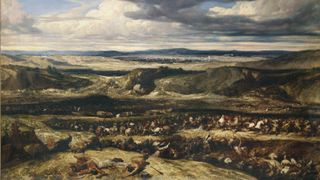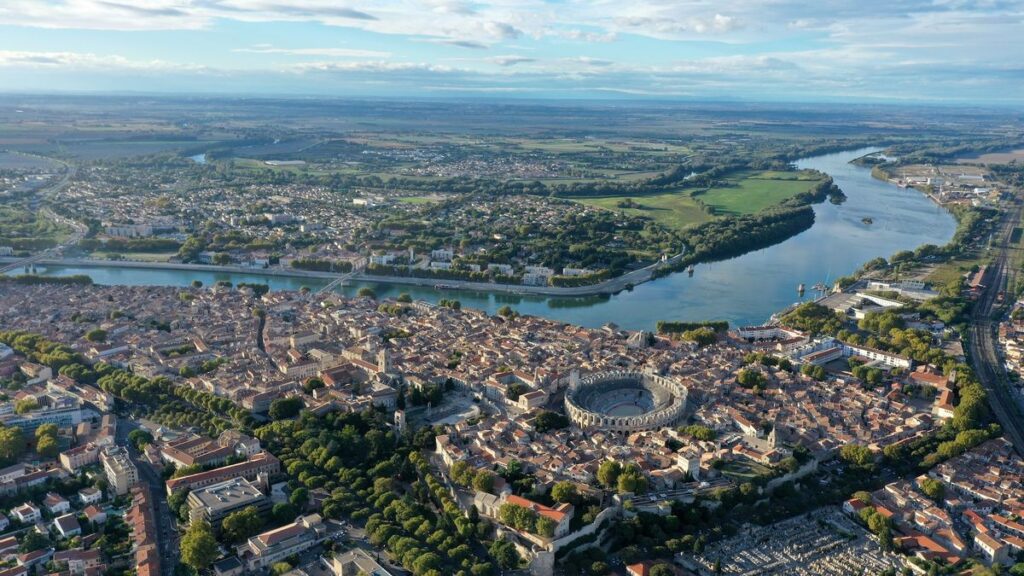Scientists in France may be hot on the trail of a long-lost canal that the Romans built over two millennia ago while battling the Celts.
The waterway, known as the Marius Canal, was built around 2,100 years ago within the Rhône River delta. It was the first major Roman water hydraulic feature in what was then Gaul, preceding dams, watermills and aqueducts. According to historical accounts, it was built between 104 and 102 B.C. by the troops of Julius Caesar‘s uncle, the general Gaius Marius. Its construction was meant to aid efforts in the Cimbrian Wars, a series of conflicts between the Roman Republic and Celtic tribes, the Cimbri and Teutones, that were migrating south from Jutland, present-day Denmark.
At that time, the Roman Republic was protecting its new province in Gaul, a region that covered what is now France, Belgium and parts of western Germany. But the encroachment of the Celts put that land, as well as the rest of the Roman Republic, at risk.
“The Roman general Marius came to southern Gaul in 104 B.C. to head off the risk that the Cimbri and Teutones ravaging Gaul and Spain would reach Italy,” Simon Loseby, an honorary lecturer in medieval history and an expert on southern Gaul at the University of Sheffield in the U.K. who was not involved in the study, told Live Science. “He headed a very large force, and urgently needed to supply it by sea from Rome.”
So, Marius ordered the canal be built so it could supply his troops. It bypassed the treacherous Rhône River mouths and connected the city of Arles to the Mediterranean, enabling the safe passage of large supply boats. Ultimately, the canal was a success, and the Romans defeated the Cimbri and Teutones in 101 B.C. The canal was subsequently gifted to Rome’s ally in the region, the Greek settlement of Massalia, now Marseille, which is said to have gained significant revenue from its commercial use before the canal vanished from the historical record a few centuries later.
“Despite all the research carried out in recent centuries, the Marius Canal hasn’t been found,” study lead author Joé Juncker, a geoarchaeologist at the University of Strasbourg in France, told Live Science in an email. It was last mentioned by the Roman author Pliny the Elder in the first century A.D., but its traces have all but disappeared.
Related: 1,700-year-old Roman shipwreck was stuffed to the gills with fish sauce when it sank

Finding the canal
In 2013, a geophysical survey of a delta in the Vigueirat marshes just south of Arles revealed an underwater feature that scientists hypothesized could be an ancient canal. Subsequent excavations around the site unearthed 69 pieces of Roman ceramics, two ancient wooden stakes and two extensive cobblestone platforms. Radiocarbon dating of the stakes placed them within the first to fourth century A.D., while organic materials within the platforms dated between the first century B.C. and third century A.D. when the Marius Canal would have been used.
Since the site’s discovery 12 years ago, researchers have been trying to gather evidence to confirm whether this area really hosts the long-lost Marius Canal.
In the new study, Juncker and his team drilled sediment cores from the ancient canal and its banks and took physical measurements to compare with the geophysical surveys conducted in 2013.
“The canal length, width, orientation, sediment content and the measured radiocarbon dates confirm that it was a navigable canal in Roman times, partially excavated in a former branch of the Rhône and an ancient lagoon,” Juncker said.
Natural tributaries in river channels are usually around 360 to 590 feet (110 to 180 meters) wide, while the new analysis shows the putative Marius Canal is much narrower at around 98 feet (30 m) wide. This aligns with other Roman canals. This width would have enabled large Roman ships to navigate the area, the authors reported in the study, published in the April issue of the Journal of Archaeological Science: Reports.
The new research strengthens the case that there was a canal here, Loseby said. “It’s yet another indication of the Roman capacity to conceive of and undertake large infrastructural projects at speed, despite relative technological limitations.”
Both Loseby and Juncker hope future archaeological discoveries will further establish whether the canal is the Marius Canal. Specifically, they hope excavations could lead to the discovery of quays (landing platforms for ships) or towpaths (waterways where draft animals would tow boats), which could help confirm the use of the canal and the duration of its use.
“Geoarchaeology is a science full of potential, but we must bear in mind that, without confirmation from archaeological studies, it is not possible to attribute this canal to Marius for the moment,” said Juncker. Research there is ongoing.
Roman emperor quiz: Test your knowledge on the rulers of the ancient empire
